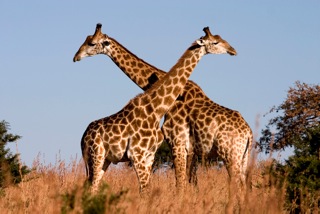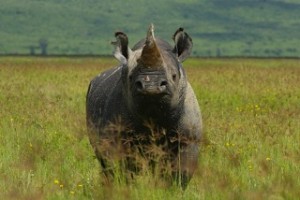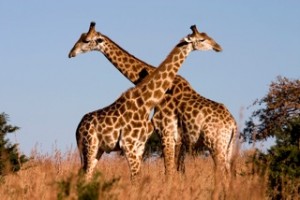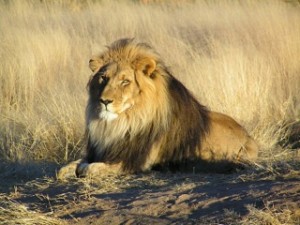Conservation. Noun. From the Latin verb conservare, to protect from harm or destruction.
Dallas safari club auctions off permit to hunt rare rhino.
Giraffe unsuitable for breeding killed at Copenhagen zoo .
Six Lions at Longleat safari park destroyed due to excessive population increases.
What on earth is going on?
These stories have gone around the world and caused almost unanimous outrage. This is not surprising. The disparity between the ideals of conservation and the sometimes tricky real-world dilemmas that occur can cause consternation and indignation to many. Given my previous posts you won’t be surprised to learn that it might be a bit more complicated that the headlines have led us to believe. So let’s delve a bit deeper and see whether these animals were justifiably killed or whether there’s something else going on. As always, I’m going to try and leave the ethical considerations to one side as much as possible and focus on analysing the scientific justifications given. So, on with the show . . .
The Rhino
In early January a permit to shoot an elderly rhino was auctioned off to raise money for rhino conservation. There are arguments on both sides as to whether this was a good idea. The rhino was, according to reports, an old, non-breeding male rhino who had the potential to injure or even kill younger males. Removing him as a threat seems to be a good idea. Culling occurs in many managed populations and is used to maintain healthy, sustainable populations. Removing this animal from the population is, based on our understanding of male rhino dynamics, the best course of action scientifically.
Whether the auction was the best way of achieving this is outside my remit. Culls can, and do, occur with less publicity and spectacle. Given the outrage expressed, it would be interesting to know how many of the people complaining had ever donated to rhino conservation organisations. If the organisations were not so desperate for money would they have ever considered such a headline-grabbing action?
The Giraffe
Copenhagen zoo killed a giraffe that was considered useless for breeding . They then publicly dissected it and fed it to their lions. This story is the most interesting as it has two separate components: the killing and the treatment of the animals after death. Here I am extremely split. Captive giraffes are, to some extent, victims of their own success. Breeding programmes across Europe have been very successful and zoos are pretty much at ‘carrying capacity’ with few able to take excess giraffes and genetic inbreeding is becoming a problem. One of the zoos that offered to take the giraffe already has his older brother which was the argument used against the transfer.
The obvious solution would be to prevent the giraffes from breeding in the first place but this isn’t always easy in giraffes. From the BBC article,
“Contraception and castration have been raised as possibilities, but both would require sedation. This is a relatively high-risk procedure in the case of giraffes, as they are liable to break their necks when they fall while sedated.”
There are contraceptives available now that can be used with little risk so the number of ‘excess’ giraffes should reduce in the future. However, Copenhagen Zoo has a policy of allowing their animals to breed naturally, even though this is clearly causing a surfeit of animals.
As to the treatment of the body, I’m in no doubt they did the right thing. One of my favourite TV programmes in recent years was Inside Nature’s Giants where large animals were dissected and their anatomy and evolution was described and shown in all it’s ‘gory’ detail. I am all for increasing the public understanding of how animals work and the crowds that gathered to watch are proof that this interest exists. It is important to demystify biology and this is a great way of doing so. As for feeding the giraffe to the lions, well, what else were they going to do with it? Bury it? Burn it? Either way a waste of meat.
While I’d intended to ignore everything but the science, it’s proving incredibly hard! So my editorial for this story is that I’m not sure that killing the giraffe was the best idea. There were zoos that were offering to take the giraffe and, while it may not be the ideal option in terms of the breeding program, it is up to the zoo taking the giraffe to determine this. If they think the benefits of having another giraffe (and the public goodwill they will receive for offering sanctuary) outweigh the costs then I think this is their decision, not Copenhagen Zoo’s. The zoo needs to consider contraception as another instance like this will not go down well with the public and zoos are reliant on public support for their continued existence. I’ve seen several people say they will never visit the zoo and if they hold true to their word and their example is followed, Copenhagen Zoo is looking at tough times ahead.
Their decision to use the killing as an educational exercise was the best thing they could do, though I do find it strange that a lot of the outrage seems to be directed at the public nature of everything rather than the killing in the first place. The outrage is precisely why this should be done in public, though I do think the attitude of the zoo has been a bit too confrontational and almost designed to cause outrage.
Lions
Finally, the lions. Lions have been synonymous with Longleat for decades so to hear that they have killed six is almost unbelievable. As with all these stories there is public outrage, with people unable to understand how an organisation that has looked after lions for over 50 years can end up with killing an entire litter. As with all these stories, digging a little deeper reveals a more complex story. A statement from Longleat was given to HuffPo where they explained why they felt the litter needed to be destroyed. The cubs had genetic problems due to inbreeding which was could result in brain tumours and was already causing behavioural problems. From their statement,
“. . . all [cubs] individually exhibited adverse neurological signs such as ataxia, incoordination and odd aggressive behaviour that were not considered normal . . One of the cubs had to be put down because he was attacked by his brother and by Louisa [his mother]. The further lions referred to were put down due to associated and severe health risks.”
From this statement it seems that euthanasia was an inevitable and unfortunate consequence of inbreeding in their mother (breeding that did not occur at Longleat). It highlights why breeding programs must be carefully monitored and controlled and why animals like the giraffe should not enter the breeding population.
Conclusions
This has turned into more of an opinion piece than I’d intended which was, I suppose, inevitable considering the contentious nature of the stories. I hope I have shown that there are more to the stories than the headlines and they are more justifiable than they may first appear.
Zoos play an important role in conservation and education. They have to make difficult, unpopular decisions at times and when they do it is vital that they explain clearly their scientific rationale. The public are quick to react without getting all the facts and if you don’t explain your case carefully you risk a backlash that can have significant negative consequences. The science may be sound but the ‘politics’ surrounding the stories is more controversial and must treated with as much care as the scientific decisions that instigated them.
Author: Sarah Hearne, hearnes[at]tcd.ie, @SarahVHearne
Image credits: Wikimedia commons





One Reply to “Killing in the Name of Science – Dying for Conservation”